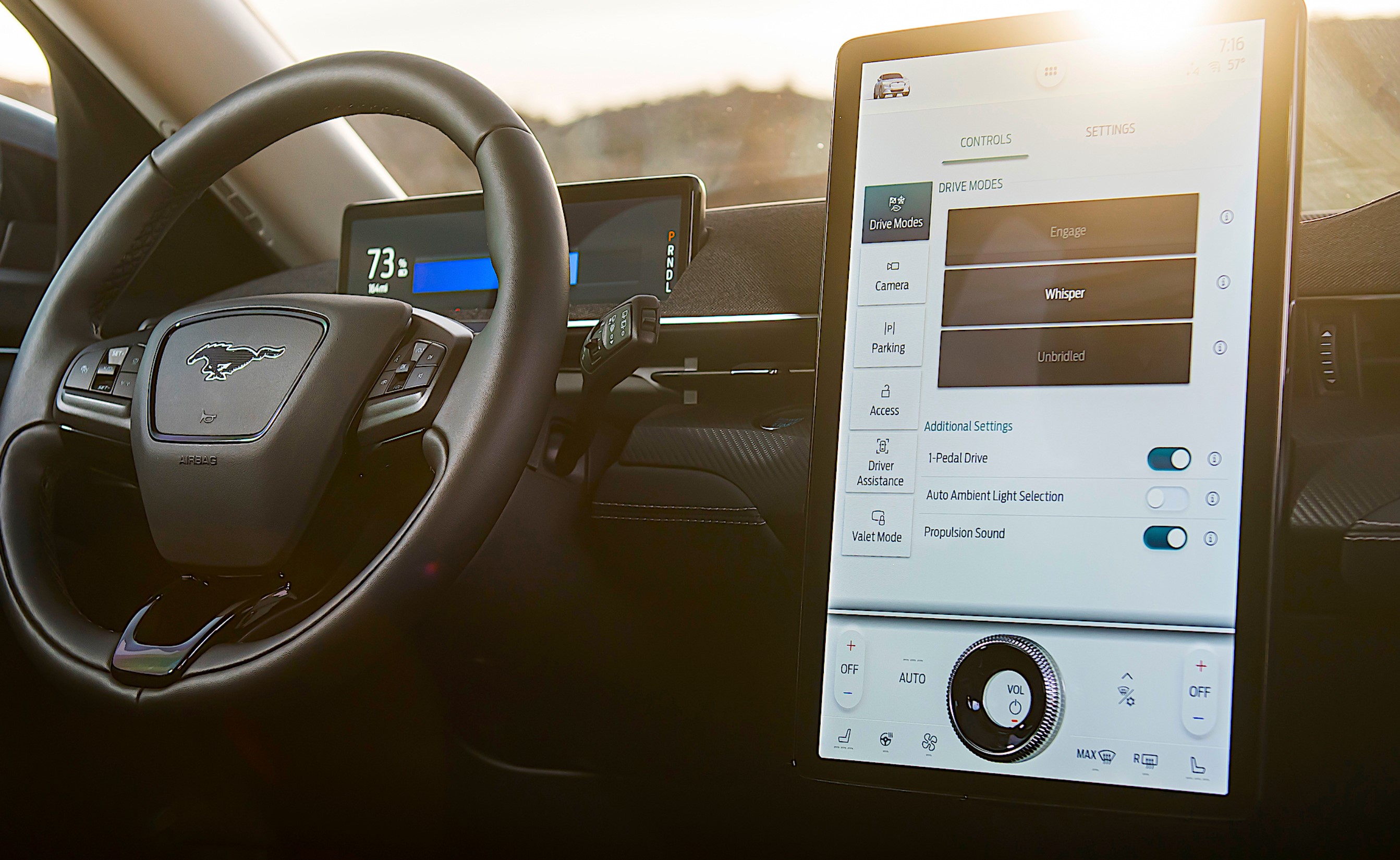Thing 1. Ford Develops Analog Volume Control that Isn’t for Mustang Mach-E
As best I can tell from Ford’s photo of the Mustang Mach-E’s display and control suite, the only mechanical controls are on the steering wheel hub and steering column (Fig. 1). Everything else is touch control through the vehicle’s Tesla-like 15.5″ LCD.

 Fig. 1 Mustang Mach E Cockpit – click for higher resolution
Fig. 1 Mustang Mach E Cockpit – click for higher resolution
Except that Ford’s designers were very much aware that customers prefer a mechanical volume control to tapping or swiping. (I would have added a mechanical tuning control, but Ford didn’t ask me.) It is certainly possible to drill a hole in an appropriately designed LCD for the shaft of an analog volume control, but the design team wanted to avoid that complexity, and also wanted to retain the freedom to re-program the entire display-and-control surface via over-the-air updates.
“The volume knob is an interaction you want instantly, and you don’t want to tap-tap-tap a button or display,” said Ford SYNC Software Supervisor Husein Dakroub. “Customers wanted a tactile volume knob. It is right there in your reach. You can keep your eyes on the road because you don’t have to look at the screen.”
Hmmm. That suggests that touch controls are always an ergonomic sacrifice, but Dakroub didn’t say that.
So the challenge was to provide a mechanical knob that the system saw as a touch input. The designers’ solution was to bond a rotating plastic knob to the display glass.
“The rotary knob is acting like a finger, so the system thinks it is a finger going in circles,”
Dakroub said. A common problem with virtual controls is lag, as different inputs compete for priority from the computer system. Dakroub’s team placed the volume control function in the lower layers of the software stack, so the system reacts quickly.
Observant readers may have noticed the PRNDL shift sequence on the driver’s information display. How can a pure electric vehicle with a single-speed transmission have a “low” gear ratio? Well it can’t. According to the Mach-E owner’s manual the low position, which can be entered at any vehicle speed, increases the deceleration when you lift off the accelerator pedal. It is exactly the same as activating the one-pedal-drive setting. I suppose there’s an old-timey charm in having PRNDL on the instrument panel, but it sure does seem like Ford went out of its way to confuse its customers. The knob is nice though.
Thing Two.
Last week Plastic Logic introduced its “Legio” 2.1-inch flexible color display using a version of E Ink’s ACeP color imaging film. The Legio is a color active-matrix display with 246×146 pixels and Plastic Logic’s organic TFT (OTFT) backplane (Fig. 2).
The display can show four colors (red, blue, green, and yellow, plus black and white), which is a large step up from the widely used E Ink-based electronic shelf labels that exhibit black, white, and one color. Legio displays exhibit a bending radius of 30 mm for the display area and 40 mm for the chip area. Plastic Logic is targeting smart cards, wearables, IoT, and other applications “where color, flexibility, ultra low power consumption and a small display are all required”. Development kits are available now from Plastic Logic. (KW)
Ken Werner is Principal of Nutmeg Consultants, specializing in the display industry, manufacturing, technology, and applications, including mobile devices, automotive, and television. He consults for attorneys, investment analysts, and companies re-positioning themselves within the display industry or using displays in their products. He is the 2017 recipient of the Society for Information Display’s Lewis and Beatrice Winner Award. You can reach him at [email protected] or www.nutmegconsultants.com.


